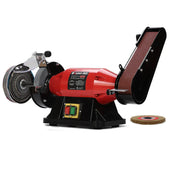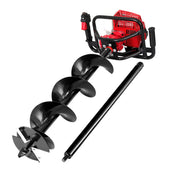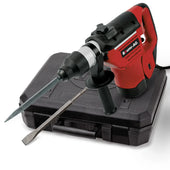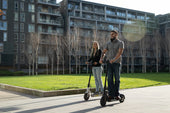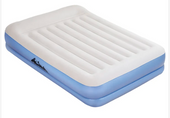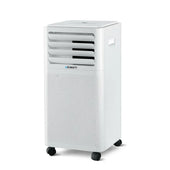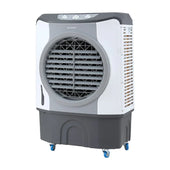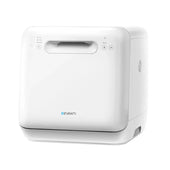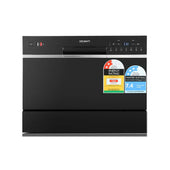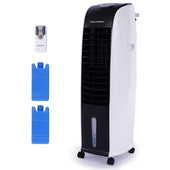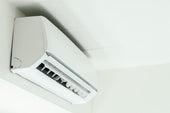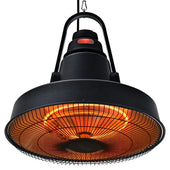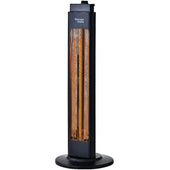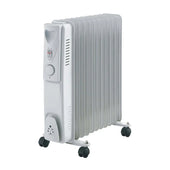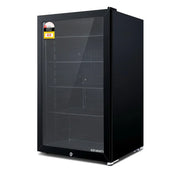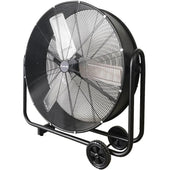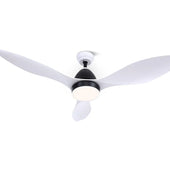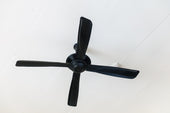Introduction: Why Desk Height Matters
Desk height plays a crucial role in promoting ergonomic posture and enhancing productivity. An improperly adjusted desk can lead to discomfort, strain, and long-term issues such as back and neck pain. The ideal desk height ensures that the user’s elbows are positioned at a 90-degree angle when typing, and their wrists remain straight. It allows for seamless interaction with tools and devices, reducing unnecessary exertion. Furthermore, it adapts to various tasks, whether writing, working on a computer, or crafting. Selecting the proper desk height is essential for creating an efficient workspace that harmonises comfort, functionality, and health for the individual.
The Science Behind Ergonomic Desk Height
Ergonomic principles consider human physiology, biomechanics, and comfort when designing workspaces. At During Days, Desk height directly influences posture, blood circulation, and muscle strain. Poorly aligned desks can lead to prolonged health issues, including repetitive strain injuries and back pain.
Optimal desk height is determined by individual body dimensions and task requirements. A desk should allow the user to maintain a 90-100° elbow angle and avoid hunched shoulders. The hips, knees, and ankles should also rest at approximately 90°, ensuring balanced support.
Key factors include seat height, monitor placement, and keyboard position to promote neutral wrist alignment and proper spinal posture, preventing discomfort during extended work sessions.
Standard Desk Height: What Most People Use
The standard desk height used by most people is around 73-76 centimetres (29-30 inches) from the floor to the desktop. This measurement is designed to accommodate the average height of users while ensuring ergonomic comfort.
Office desks at this height work well for tasks like writing, typing, or using a computer. However, individuals with specific needs may benefit from sit stand desk, which allow customisation based on activities or physical preferences.
Desk height may also vary slightly depending on local manufacturing standards or furniture design trends. Considering legroom and posture alignment is essential in choosing the right desk height for daily use.
The Role of Your Height in Determining Desk Measurements
The height of an individual plays a critical role in finding the right desk height. A desk that complements a person’s stature ensures a comfortable and ergonomic workspace, reducing strain on muscles and joints. Standard desk heights generally cater to individuals with an average height of approximately 160-180 cm. However, taller or shorter individuals may require customised adjustments or desks with adjustable heights.
- Taller Individuals: A higher desk, often above 78 cm, prevents slouching and promotes proper posture.
- Shorter Individuals: A lower desk height, typically below 73 cm, allows elbows to rest at a natural angle while typing or writing.
To ensure optimal comfort, posture alignment with footrests and adjustable chairs can also be utilised to complement varying desk heights.
Customising Desk Height Based on Individual Needs
Customising desk height ensures comfort, efficiency, and ergonomic support tailored to individual needs. Factors such as body height, type of work, and preferred sitting or standing postures play a significant role in determining the optimal desk height.
For seated work, a desk height allowing elbows to rest at a 90-degree angle and wrists to remain straight is desirable. For standing desk, the surface should align with the user’s natural elbow height. Adjustable desks cater to varied activities or shared workspaces, offering flexibility.
Additional adjustments, such as monitor stands or footrests, can complement desk height adjustments, addressing specific needs or preferences. Investing in personalisation improves focus and prevents strain.
Height Recommendations for Standing Desks
Standing desks should accommodate the user’s natural posture to promote comfort and ergonomics. Ideally, the desk height should allow the user’s elbows to rest at a 90- to 120-degree angle while typing or writing.
To determine the correct height:
- Find the arm position: Arms should hang naturally by the sides, with forearms parallel to the ground.
- Maintain the screen level: The top of the monitor should align with the eyes to prevent neck strain.
- Adjust for footwear: Consider heeled shoes or insoles when calculating height adjustments.
For most individuals, standing desk height should range from 91-122 cm, depending on stature.
Desk Height for Sitting vs. Standing Workstations
The ideal desk height varies significantly between sitting and standing workstations. For sitting desks, the height is typically determined by an individual’s seated elbow position. When sitting upright with feet flat on the floor, the desk should allow elbows to rest at a 90-degree angle, usually around 70–80 cm for most adults.
Computer desk configurations should support ergonomic needs whether the user is seated or transitioning to a standing posture. Adjustable desks are often recommended to accommodate height fluctuations, ergonomic needs, and preferences.
How to Adjust Your Chair for Optimal Desk Ergonomics
Proper chair adjustment is key to creating an ergonomic workstation. Begin by ensuring the seat height allows your feet to rest flat on the floor, with thighs parallel to it. Adjust the seat depth so there’s a slight gap—around two inches—between the back of your knees and the front edge of the chair.
Maintain a reclining angle of 90 to 120 degrees; this supports your lower back while promoting healthy posture. Armrests should be positioned to keep shoulders relaxed, achieving a neutral elbow angle close to 90 degrees. For added support, consider using a lumbar cushion or built-in backrest feature.
Tools and Accessories to Modify Desk Height
To adjust desk height effectively, various tools and accessories can be utilised to improve ergonomics and comfort.
- Adjustable Desk Risers: Desk risers allow users to elevate the entire desk surface to a more suitable height without replacing the desk.
- Monitor Stands: These stands raise monitors independently, preventing unnecessary straining of the neck.
- Desk Legs with Adjustable Screws: Some desks feature legs with built-in adjustment screws to modify height.
- Keyboard Trays: Under-desk trays are adjustable and aid in optimising hand and wrist positioning.
- Ergonomic Stools and Seating: Complementing desk height adjustments, these enhance seated posture.
Proper selection ensures a tailored workspace for individual needs and preferences.
Tips for Choosing the Right Desk for Your Workspace
Selecting the ideal desk for a workspace requires careful consideration of various factors to ensure comfort and functionality. First, evaluate the dimensions of the space where the desk will be placed. This helps narrow choices to models that fit without overcrowding. Next, consider ergonomic design; ensure the desk height complements the user’s chair and promotes a comfortable posture. Materials and durability should also be assessed—solid wood or metal constructions are ideal for longevity. Style and aesthetics matter, but they should align with practicality. Additional features, such as storage solutions, can enhance overall organisation and efficiency. For a clean and modern look, you might explore a white desk or a black desk, both of which offer functionality with aesthetic appeal.
Common Mistakes When Setting Desk Height
When setting desk height, individuals often overlook key ergonomic principles, which can lead to discomfort and inefficiency. These errors frequently stem from a lack of understanding about the importance of proper positioning.
Common Mistakes Include:
- Ignoring personal height: Many people fail to adjust the desk based on their own height, causing strain on the neck and shoulders.
- Overlooking chair-desk alignment: Misaligned chair and desk heights can lead to improper posture and back pain.
- Fixating on aesthetics over ergonomics: Prioritising design over functionality often results in an ill-fitting workspace.
- Neglecting keyboard and monitor placement: Desk height is ineffective if monitor and keyboard positions do not align properly.
Correcting these mistakes ensures comfort, productivity, and long-term health benefits.
The Impact of Improper Desk Height on Health and Productivity
Improper desk height can contribute to a wide range of health problems and hinder productivity. Sitting at a desk that is too high or low forces individuals into awkward postures, which may cause:
- Neck and Shoulder Strain: Misaligned screens or document placement can lead to craning or slouching.
- Lower Back Pain: Unsupported sitting positions stress the lumbar region over time.
- Wrist and Arm Discomfort: Poor ergonomics during typing or writing increases the risk of repetitive strain injuries.
Inadequate desk height disrupts focus, as physical discomfort diverts attention from tasks. Over time, this may reduce efficiency and workplace satisfaction. Ensuring desks are at an appropriate height promotes both wellbeing and seamless workflow.
How to Test If Your Desk Height is Correct
To determine if a desk height is suitable, one can use simple, practical methods.
- Check Elbow Angle: When seated, elbows should form a 90-degree angle, resting comfortably on the desk. Shoulders need to remain relaxed, not raised or slouched.
- Monitor Eye Level: The top of the screen should align with eye level, requiring minimal neck movement.
- Leg Position: Feet should rest flat on the ground, thighs parallel to it, creating another 90-degree angle at the knees.
- Test Comfort: Use the desk for daily tasks. If strain occurs in the neck, shoulders, or wrists, height adjustment may be necessary.
Adjustable desks provide flexibility for fine-tuning these factors efficiently.
Desks for Professionals: Tailored Heights for Specific Jobs
Professionals require desk heights that align with their specific tasks to achieve optimal ergonomics and productivity. Architects, for instance, benefit from taller drafting tables set between 90-100 cm tall to accommodate their standing workstations and tools. Office workers often prefer desks at approximately 70-75 cm for seated work and computer use. Creative roles like artists or designers may opt for Artiss standing desk to switch between sitting and standing positions.
Occupational needs also influence desk design; laboratories necessitate higher surfaces to facilitate experimentation while standing. Transitioning from task to task, having a height-adjustable desk ensures adaptability, catering to diverse professional requirements efficiently.
Future Trends in Adjustable and Smart Desk Technologies
Advancements in adjustable and smart desk technologies point towards greater customisation and integration with modern lifestyles. Emerging trends include desks with AI-assisted adjustments, which adapt automatically to user preferences based on posture or usage patterns. Integrated health monitoring systems, such as sensors for tracking movement and heart rates, are becoming common, encouraging healthier work habits.
Features like voice control and mobile apps enable seamless operation, while wireless charging surfaces enhance convenience. Eco-friendly designs and materials also align desks with sustainability goals. Innovations in multi-user profiles provide flexibility for shared spaces. These trends reflect demand for desks that blend functionality with personal well-being.
Final Thoughts: Achieving the Perfect Workstation Setup
Creating the ideal workstation involves more than adjusting desk height; it requires a holistic approach. Desk height should align with an individual’s seated or standing posture, ensuring elbows rest at a 90-degree angle and wrists stay straight while typing. Equally important are other ergonomic considerations:
- Chair Position: The chair should support the lower back, with feet flat on the floor or on a footrest.
- Monitor Placement: The top of the screen should be at or slightly below eye level.
- Keyboard and Mouse: These should sit close to the body, minimising strain on arms.
A well-optimised setup fosters productivity and reduces long-term discomfort.



